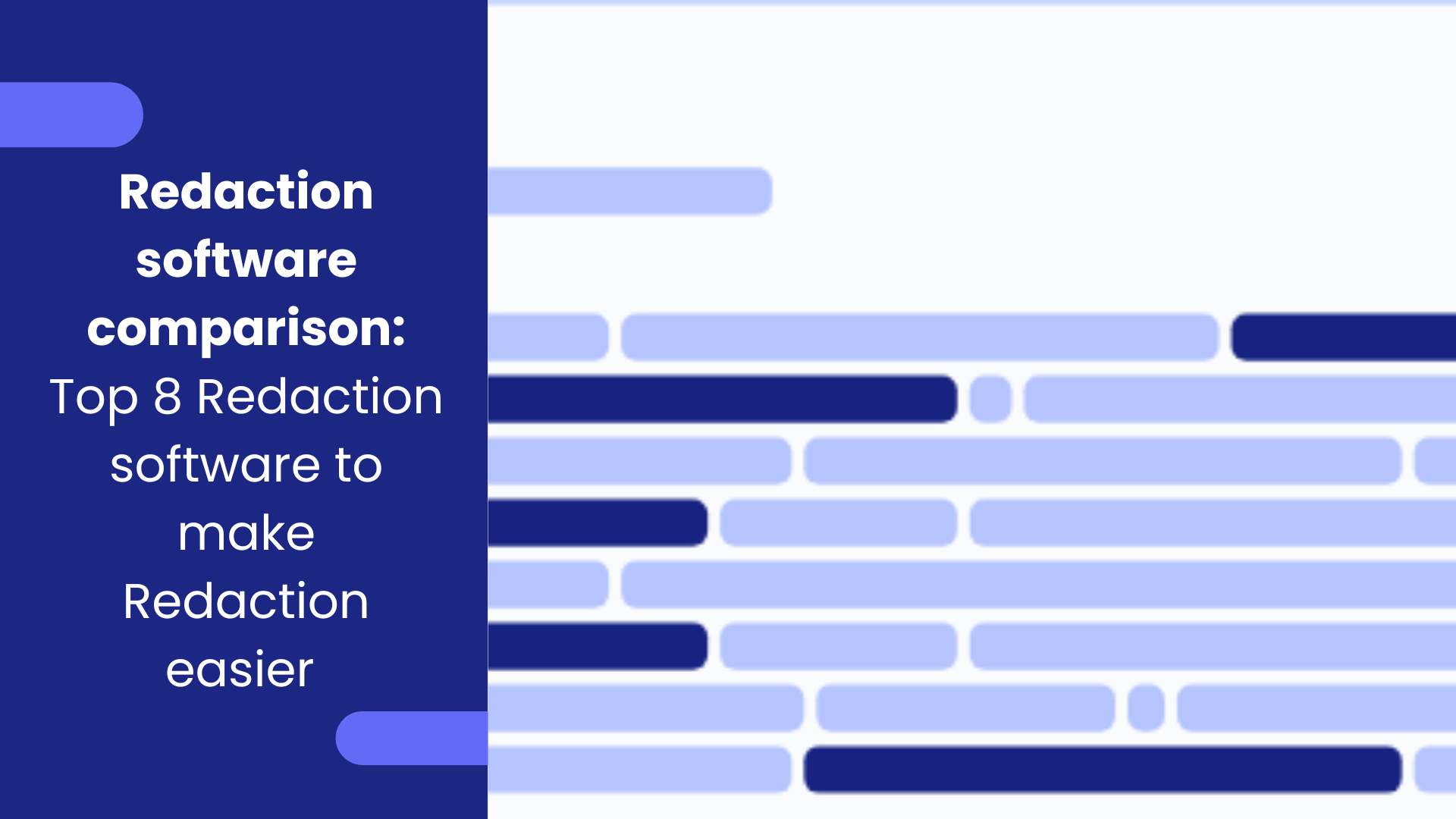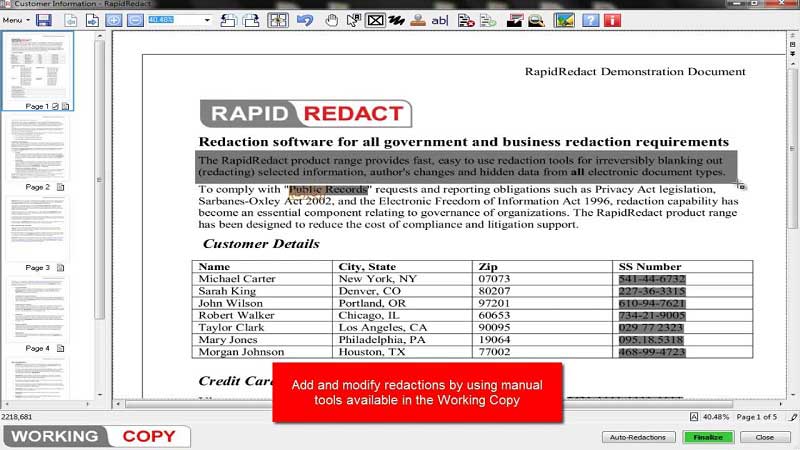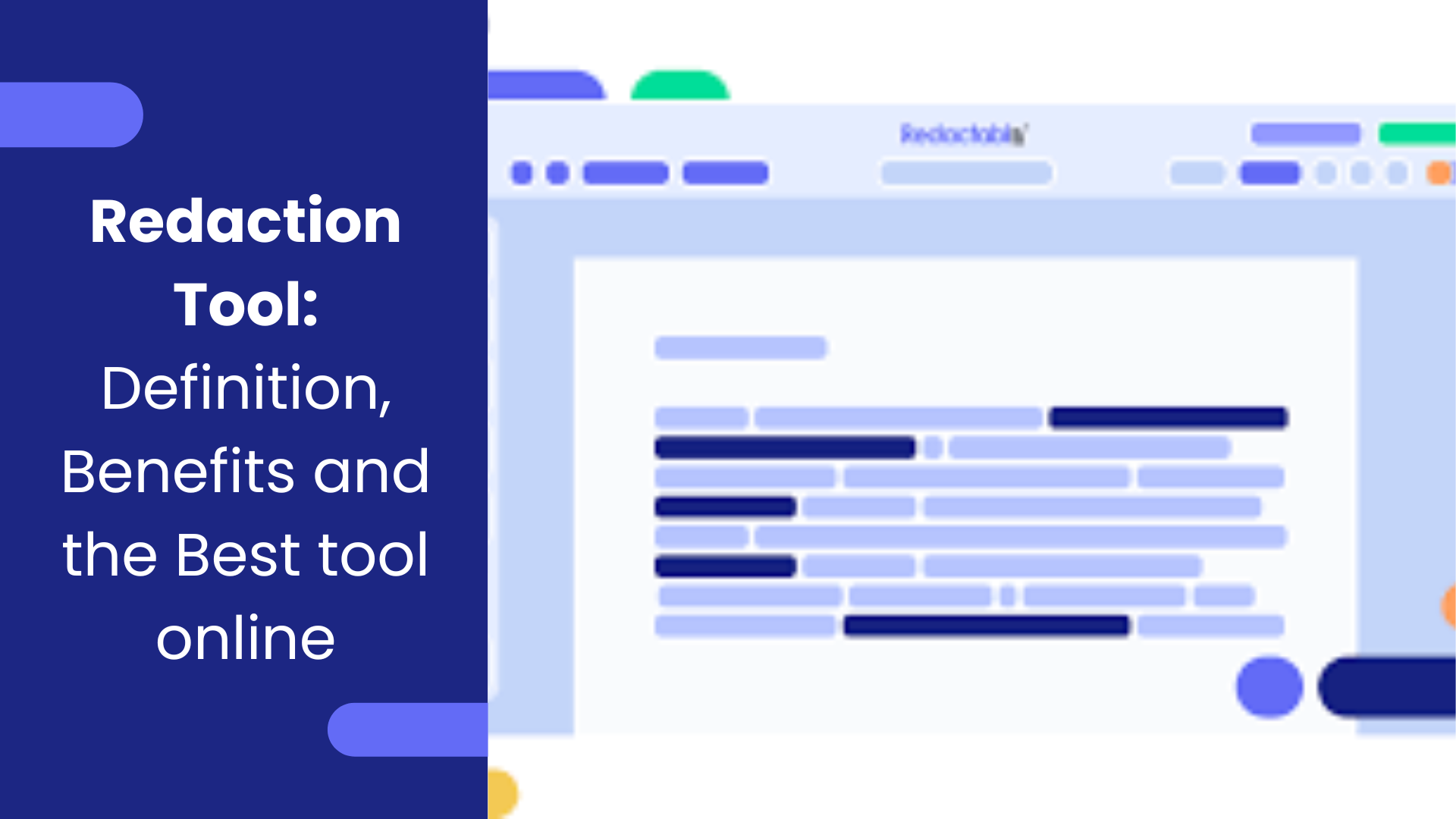Redacting software plays a crucial role in protecting sensitive data, offering a comprehensive solution for various industries and scenarios. From automated redaction to different methods, explore the world of redacting software with us.
Introduction to Redacting Software
Redacting software is a tool designed to selectively hide or remove sensitive information from documents or digital files. Its primary purpose is to protect confidential data and prevent unauthorized access to sensitive details.
It is crucial to redact sensitive information to safeguard privacy, comply with data protection regulations, and prevent data breaches. Failure to redact such information properly can lead to severe consequences, including legal liabilities, reputational damage, and compromised security.
Common Uses of Redacting Software
- Legal industry: Redacting confidential details in legal documents before sharing with opposing parties.
- Healthcare sector: Removing personal identifiers from medical records to ensure patient privacy.
- Government agencies: Protecting classified information in official documents and reports.
- Financial institutions: Concealing account numbers and financial data to prevent identity theft.
Features of Redacting Software

Redacting software offers a variety of features that make it an essential tool for securely editing sensitive information. From automated redaction to various redaction methods, these key features ensure efficient and accurate redaction processes.
Automated Redaction
Automated redaction is a feature that sets redacting software apart from manual methods. This feature allows users to quickly and easily redact sensitive information in bulk, saving time and ensuring consistency in the redaction process.
- Automated redaction can scan documents for specific types of information, such as names, addresses, or social security numbers, and redact them automatically.
- This feature is especially useful for organizations dealing with large volumes of documents that require redaction.
- Automated redaction reduces the risk of human error and ensures that no sensitive information is missed during the redaction process.
Various Redaction Methods
Redacting software supports various redaction methods to cater to different user needs and preferences. These methods offer flexibility and customization in the redaction process.
- Blackout Redaction: This method involves covering sensitive information with a black box to hide it from view.
- Whiteout Redaction: Whiteout redaction is the opposite of blackout redaction, where sensitive information is covered with a white box.
- Text Redaction: Text redaction involves completely removing sensitive information from a document.
- Image Redaction: Image redaction allows users to blur or pixelate specific areas of an image to hide sensitive information.
- Metadata Redaction: Metadata redaction involves removing hidden data embedded in a document, such as author information or timestamps.
Types of Redactions
When it comes to redacting sensitive information, there are different types of redactions that can be applied to ensure privacy and confidentiality. Let’s explore the various types of redactions, the challenges associated with each, and examples of situations where they are necessary.
Text Redactions
Text redactions involve the removal or masking of sensitive or confidential text from a document. This can include personal identifiable information (PII), financial details, or any other sensitive data that needs to be protected. The main challenge with text redactions is ensuring that all instances of the sensitive text are properly identified and redacted, as missing even one instance can compromise the security of the information. Examples of situations where text redactions are necessary include legal documents, medical records, and financial reports.
Image Redactions
Image redactions involve the editing or blurring of images to conceal sensitive information. This can include faces, license plates, or any other identifying details that need to be protected. One of the challenges with image redactions is maintaining the overall quality and integrity of the image while still effectively concealing the sensitive information. Examples of situations where image redactions are necessary include CCTV footage, social media posts, and official documents with embedded images.
Metadata Redactions
Metadata redactions involve the removal or modification of metadata attached to a document or file. Metadata can contain valuable information such as author details, creation date, or location data, which may need to be redacted to protect the privacy of individuals or organizations. The challenge with metadata redactions is ensuring that all metadata fields are properly scrubbed to prevent any unintentional disclosure of information. Examples of situations where metadata redactions are necessary include sharing documents online, collaborating on sensitive projects, and protecting intellectual property.
Compliance and Legal Considerations

When it comes to compliance and legal considerations, redacting software plays a crucial role in helping organizations adhere to regulatory requirements and data protection laws. By effectively redacting sensitive information, organizations can ensure compliance with various regulations and standards.
Regulatory Requirements
One of the primary reasons organizations need to use redacting software is to comply with regulatory requirements such as GDPR, HIPAA, PCI DSS, and other data protection laws. These regulations mandate the protection of sensitive information to prevent unauthorized access and ensure privacy and security.
Data Protection Compliance, Redacting software
Redacting software helps organizations comply with data protection laws by allowing them to securely redact confidential information from documents before sharing or distributing them. This ensures that sensitive data such as personally identifiable information (PII) or financial details are not exposed to unauthorized individuals.
Legal Implications
Improper redaction practices can have serious legal implications for organizations. If sensitive information is not properly redacted and leaks occur, organizations may face legal consequences such as fines, lawsuits, damage to reputation, and loss of trust from customers and stakeholders. It is essential for organizations to follow proper redaction processes to avoid these legal risks.
Best Practices for Redacting
When it comes to redacting sensitive information using redacting software, following best practices is crucial to ensure the security and confidentiality of the data. Here are some tips and strategies to help you effectively redact information and avoid common mistakes.
Tips for Effective Redaction
- Double-check all redacted information to ensure no sensitive data is left visible.
- Use a reliable redacting software that offers advanced features like automated redaction and encryption.
- Avoid using highlighting or black bars for redaction, as these can be easily removed.
- Always save a copy of the original document before redacting any information.
Strategies for Ensuring Redacted Information Security
- Encrypt redacted documents to add an extra layer of security to the redacted information.
- Limit access to redacted documents only to authorized personnel with proper clearance.
- Regularly update your redacting software to ensure it has the latest security patches and features.
- Implement strict data handling procedures to prevent unauthorized access to redacted documents.
Common Mistakes to Avoid
- Forgetting to remove metadata from redacted documents, which can reveal sensitive information.
- Using ineffective redacting techniques that can easily be reversed or bypassed.
- Not securely storing redacted documents, leaving them vulnerable to data breaches.
- Ignoring compliance regulations and legal requirements when redacting sensitive information.
Last Word

As we conclude our discussion on redacting software, remember the importance of proper redaction practices in maintaining information security and compliance with regulations. Stay informed and stay secure.
